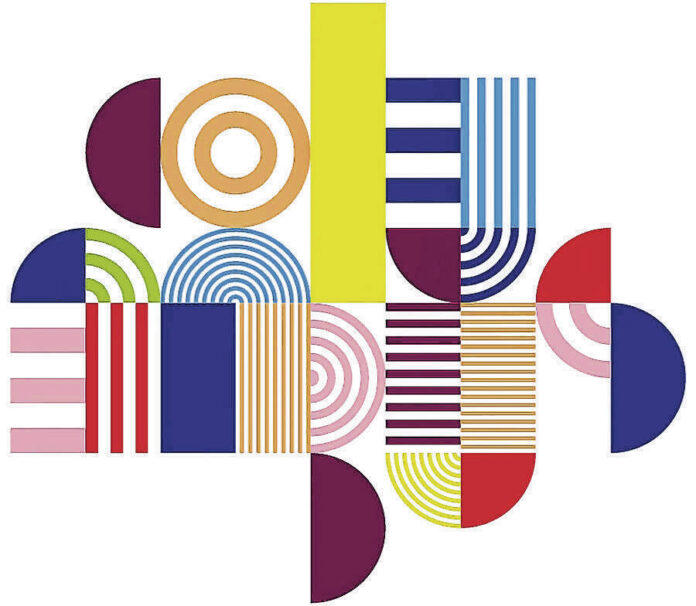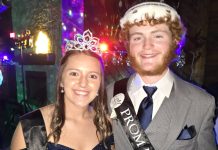COLUMBUS, Ind. — Exhibit Columbus has announced the four J. Irwin and Xenia S. Miller Prize recipients along with seven University Design Research Fellows (UDRF) as part of the fourth cycle of the exhibition, with a theme of “Public By Design.”
The honored group of architects, artists and landscape architects will bring talented and internationally-recognized participants to the Exhibit Columbus exhibitions.
The Miller Prize was created in 2016 to honor studio-based practitioners whose work is focused on improving urban environments through sincere engagement with communities. The name calls upon the legacy of former Columbus community leaders, J. Irwin and Xenia S. Miller, two of the greatest patrons of art and architecture of the 20th century and a family that has an unparalleled commitment to building community.
The 15 Miller Prize Recipients from previous cycles are some of the most recognized names working in their fields today, including studio:indigenios, Oyler Wu Collaborative, Frida Escobedo, SO-IL, Ecosistema Urbano, Olalekan Jeyifous, among many others.
Six curatorial partners worked with four community curators to identify, interview, and select the recipients and pair them with public downtown Columbus institutions. Through the two-year cycle, each recipient will work with a paired institution to ultimately create an installation that will become a focal point of the 2023 Exhibition, set to open in August 2023.
The J. Irwin and Xenia S. Miller Prize recipients for 2022–2023 are:
–Tatiana Bilbao ESTUDIO will be partnering with the Bartholomew County Public Library. A Mexico City-based architecture studio, the studio’s practice is an analysis of the context surrounding projects, which scale from master plans to affordable housing. The Studio pursues architecture through multidisciplinary perspectives and promotes a collective environment with a diverse staff of architects, academics, and model makers. The working method uses hand drawings and models to keep design and development rooted in physical and not digital exploration.
Tatiana Bilbao ESTUDIO will focus on the Cleo Rogers Memorial Library Plaza, which is the centerpiece of Fifth Street and was designed by I.M. Pei in 1971. It also features an iconic bronze sculpture that was created by Henry Moore in that same year. To learn more, visit tatianabilbao.com and mybcpl.org.
— PORT will be partnering with the Mill Race Center. PORT is a public realm design and planning consultancy made up of landscape architects, architects, urban designers, and planners based in Philadelphia and Chicago. The practice works across scales, contexts, and landscapes throughout the United States and abroad. PORT’s work is rooted in a belief in the transformative potential of a socially and ecologically vibrant urban public realm. By collaborating with communities to reimagine and shape these spaces, PORT delivers projects that are both forward-looking and emphatically of a place.
Mill Race Center is a community center for active adults located in Mill Race Park in Columbus. PORT will be focused on the public areas surrounding the center, which was designed by William Rawn Associates and opened in 2011. For more, visit porturbanism.com or millracecenter.org.
— Practice for Architecture Urbanism | PAU will be partnering with the City of Columbus Department of Public Works. Practice for Architecture Urbanism (PAU) is a Manhattan-based studio dedicated to the advancement of sustainable, equitable, and joyous cities. The studio is led by Vishaan Chakrabarti and Ruchika Modi. PAU embraces a scale-fluid design approach to a continuum of architecture and urbanism projects including civic institutions, public infrastructure, and social housing. The team of 30 , a network of experienced collaborators, and their clients all come to PAU inspired by a collective desire to palpably and positively impact the world.
Columbus was founded in 1821 and serves as the county seat of Bartholomew County with a population of just over 50,000. The city received a 2022 National Endowment for the Arts Our Town Grant to work with Exhibit Columbus and focus on the cultural and economic development of its historic downtown. PAU will be focused on the public areas surrounding The Commons, which was designed by Koetter Kim & Associates and opened in 2011. To learn more, visit pau.studio and columbus.in.gov.
— Studio Zewde will be partnering with the Columbus Parks and Recreation Department. Studio Zewde is a landscape architecture, urban design, and public art practice based in Harlem, New York City. The studio’s work is well-known for its design methodology that syncs site interpretation and narrative with a dedication to the craft of construction. The firm’s employees have multi-disciplinary backgrounds in landscape architecture, architecture, city planning, urban design, sociology, statistics, community organizing, and public art.
Studio Zewde will focus on the 83-acre Mill Race Park in downtown Columbus where the Flat Rock and Driftwood Rivers join together to become the East Fork White River and eventually connect to the Mississippi River. The area became a park in the 1960s and its current design was completed by Michael Van Valkenburgh Associates in 1993. To learn more, visit studio-zewde.com and columbusparksandrec.com.
The six curatorial partners for “Public by Design” are: Paola Aguirre, Urban Designer at BORDERLESS, Chris Merritt, Landscape Architect at Merritt Chase, Lauren M. Pacheco, Civic and Cultural Artist at Steel Studio Foundation, Bryony Roberts, Designer, Writer, Educator at Bryony Roberts Studio, Raymund Ryan, Curator at Large at The Heinz Architectural Center at Carnegie Museum of Art, and Holly Warren, Assistant Director for the Arts, Economic and Sustainable Development Department at City of Bloomington.
In addition to the Miller Prize Recipients, Exhibit Columbus announces the seven University Design Research Fellows (UDRF). These individuals and teams were selected through a national, open call competition for full-time university professors whose work is deeply rooted in design research. Professors were asked to respond to recommendations from the 2021 downtown activation study developed by James Lima Planning and Development (JLP+D) that looked at ways to activate the historic core of downtown Columbus. JLP+D’s work is supported by the City of Columbus and a National Endowment for the Arts “Our Town Grant”.
The six Curatorial Partners shortlisted a group of finalists, which were given to a 13-member jury made up of community stakeholders in downtown Columbus. The 2022-23 Exhibit Columbus University Design Research Fellows are:
—Joseph Altshuler, School of Architecture at the University of Illinois, Urbana- Champaign, IL and Zack Morrison Chicago, IL. Joseph Altshuler is Assistant Professor of Architecture at the University of Illinois at Urbana-Champaign and Co-Founder of Could Be Architecture, a Chicago and Urbana-based design practice. He is the Director of the Architectural Companionship Laboratory, a design research lab that works at the intersection of architecture, public art, environmental graphics, adaptive reuse, and tactical urbanism. His teaching, practice, and scholarship explore architecture and public art’s capacities to build lively audiences, initiate serious play, and amplify participation in civic life. Zack Morrison is co-founder of Could Be Architecture, a Chicago- and Urbana-based design practice that designs seriously playful spaces that build solidarity among multiple communities. Zack is also a design educator who leads participatory architecture workshops around the nation, including the educational video series “Animate Architecture” commissioned by the 2021 Chicago Architecture Biennial. Zack is the Co-Founder of the Chicago Sukkah Design Festival, a public art exhibition that includes multiple pavilion installations, designed and built in partnership with community organizations; it celebrates the cultural heritage of the neighborhood and builds new community connections.
— Esteban Garcia Bravo, Department of Computer Graphics Technology at Purdue University, West Lafayette, IN. Esteban Garcia Bravo is Associate Professor in the Department of Computer Graphics Technology at Purdue University, where he teaches digital imaging, fabrication and computational aesthetics. He is a Colombian-American artist and scholar exploring computational arts that earned his MFA from Purdue University in 2008, and a PhD in Technology, also from Purdue, in 2013. His research on computer art heritage and digital media art practices has been featured in the annual meetings of international organizations and his artwork has been displayed internationally in media art festivals, gallery exhibits, museums, public art installations, and artist-in-residence programs.
— Jessica Colangelo and Charles Sharpless, University of Arkansas Fay Jones School of Architecture and Design, Fayetteville, AR. Jessica Colangelo is Assistant Professor at the University of Arkansas Fay Jones School of Architecture and Design where she has coordinated the foundation second year studio sequence, and taught seminars around the use of storytelling in architecture and material geographies. She co-founded the architecture practice Somewhere Studio with Charles Sharpless. Together they work on commissioned projects including public space design, residential and commercial projects. The studio has worked in close collaboration with many arts and community-building organizations across the country. Charles Sharpless is Assistant Professor of Interior at the University of Arkansas Fay Jones School of Architecture and Design where he teaches foundation level design studios and design-build studios that promote student engagement with community groups through impactful design explorations that support community initiatives. He is an architect with ten years of experience in the design and construction of buildings, pavilions, and urban spaces. Previously, he practiced at Michael Maltzan Architecture, Lorcan O’Herlihy Architects, and Machado Silvetti.
— Deborah Garcia, Massachusetts Institute of Technology Department of Architecture, Cambridge, MA. Deborah Garcia is the Belluschi Fellow at the Massachusetts Institute of Technology Department of Architecture and a designer, writer, and curator. She was a recipient of the Princeton University Butler Travelling Fellowship which allowed her to be a resident at ARTFarm Nebraska, and was an invited participant for the 2019 Arctic Circle Expedition in the international territory of Svalbard, Norway. She was a co-curator of THE DRAWING SHOW at the A+D Architecture and Design Museum in 2017 and curator of One Night Stand for Art and Architecture-LA in 2016.
— Molly Hunker and Greg Corso, Syracuse University School of Architecture, Syracuse, NY. Molly Hunker is Assistant Professor at Syracuse University School of Architecture. She is also the Co-Captain of the practice, SPORTS, with Greg Corso. They approach design in a playful way, by balancing rigor and research with amusement and curiosity, and with the ambition to generate fresh and unexpected experiences of the built environment. She has worked for architecture studios and art workshops along the west coast including Doug Aitken Workshop, Talbot McLanahan Architecture, Weinstein A|U, and The LADG. Greg Corso is Assistant Professor at Syracuse University School of Architecture. He is also the Co-Captain of the practice, SPORTS. Much of their work has been public interventions that leverage the possibility for straightforward and high-economy design gestures to have significant urban and community impacts. He has worked in art and architecture studios in the United States and Europe including Studio Gang, JDS Architects, and Cliff Garten Studio, and has been a Fellow at the MacDowell Colony.
— Katie MacDonald and Kyle Schumann, University of Virginia School of Architecture Charlottesville, VA. Katie MacDonald is Assistant Professor of Architecture at the University of Virginia School of Architecture where she is Director of the Before Building Laboratory, Co-Director of the Hemp Co-Lab, and Co-Curator of the Biomaterial Building Exposition. She pioneers new biomaterial assemblies, with the aim of creating building material systems that sequester carbon and reduce construction’s contribution to the environmental crisis. She is also the Co-Founder of After Architecture with Kyle Schuman and a member of Madame Architect’s National Council. Kyle Schumann is Assistant Professor of Architecture at the University of Virginia School of Architecture where he is Co-Director of the Before Building Laboratory and Co-Curator of the Biomaterial Building Exposition. He seeks to advance the accessibility of digital fabrication in his teaching and research as well as inventing and building low-cost ground-up fabrication and imaging systems. His work spans woodworking, metalworking, casting, ceramics, and textile production, to advanced and novel digital fabrication technologies, robotics, and machine visioning systems. He is also Co-Founder of After Architecture.
— Halina Steiner, Tameka Baba, Forbes Lipschitz, Austin E. Knowlton School at The Ohio State University, Columbus, OH, and Shelby Doyle, Iowa State University College of Design, Ames, IA. Halina Steiner is Assistant Professor of Landscape Architecture at the Austin E. Knowlton School at The Ohio State University. Her research, Forensic Hydrology, focuses on overlaps between professional practice, hydrology, and infrastructure with an emphasis on scale and systems. This interest comes from her prior work as Design Director for DLANDstudio in New York City where she led master planning, green infrastructure, temporary installations, and public design projects in New York, St. Louis, New Orleans, Philadelphia, and Nigeria. Tameka Baba is Assistant Professor of Practice in Landscape Architecture at the Austin E. Knowlton School at The Ohio State University. Her research tracks the transition of urban vacancy, specifically those created by the retail industry. Within these landscapes her work aims to develop a system of temporary and long-term design solutions that create places for communities to exchange goods and cultures. She served as the design lead of South Jackson Community Garden located in Lima, Ohio as part of the Ohio Land Exchange program. Forbes Lipschitz is Associate Professor of Landscape Architecture at the Austin E. Knowlton School at The Ohio State University. Her research investigates the potential of design to reframe and reshape conventional working landscapes. Through public installations and participatory workshops, she explores ways for design to help communities better understand and engage with agricultural systems. Her research and creative work has been published nationally and internationally. Shelby Doyle is Associate Professor of Architecture and Stan G. Thurston Professor of Design Build at the Iowa State University College of Design (ISU). She is also Co-Founder of the ISU Computation & Construction Lab, and Director of the ISU Architectural Robotics Lab. The central hypothesis of CCL and Doyle’s work is that computation in architecture is a material, pedagogical, and social project; computation is both informed by and productive of architectural cultures.
“These fellows represent a cross-section of artists, architects, and landscape architects working in the U.S. at this moment. It’s an impressive group whose research is advancing important work on sustainable materials and community-based design in the public realm,” said the six Curatorial Partners.
All of the participants will be in Columbus for the upcoming Symposium, which takes place Oct. 21-22 in downtown Columbus. Moving away from the traditional format of a symposium, Public by Design will place the many communities of Columbus at the center of the conversations and do this in a public format by creating specific opportunities for engagement between the designers and the citizens of Columbus. As ever, Exhibit Columbus is designed to be responsive to the needs and desires of the community it serves, while connecting with a national audience.





